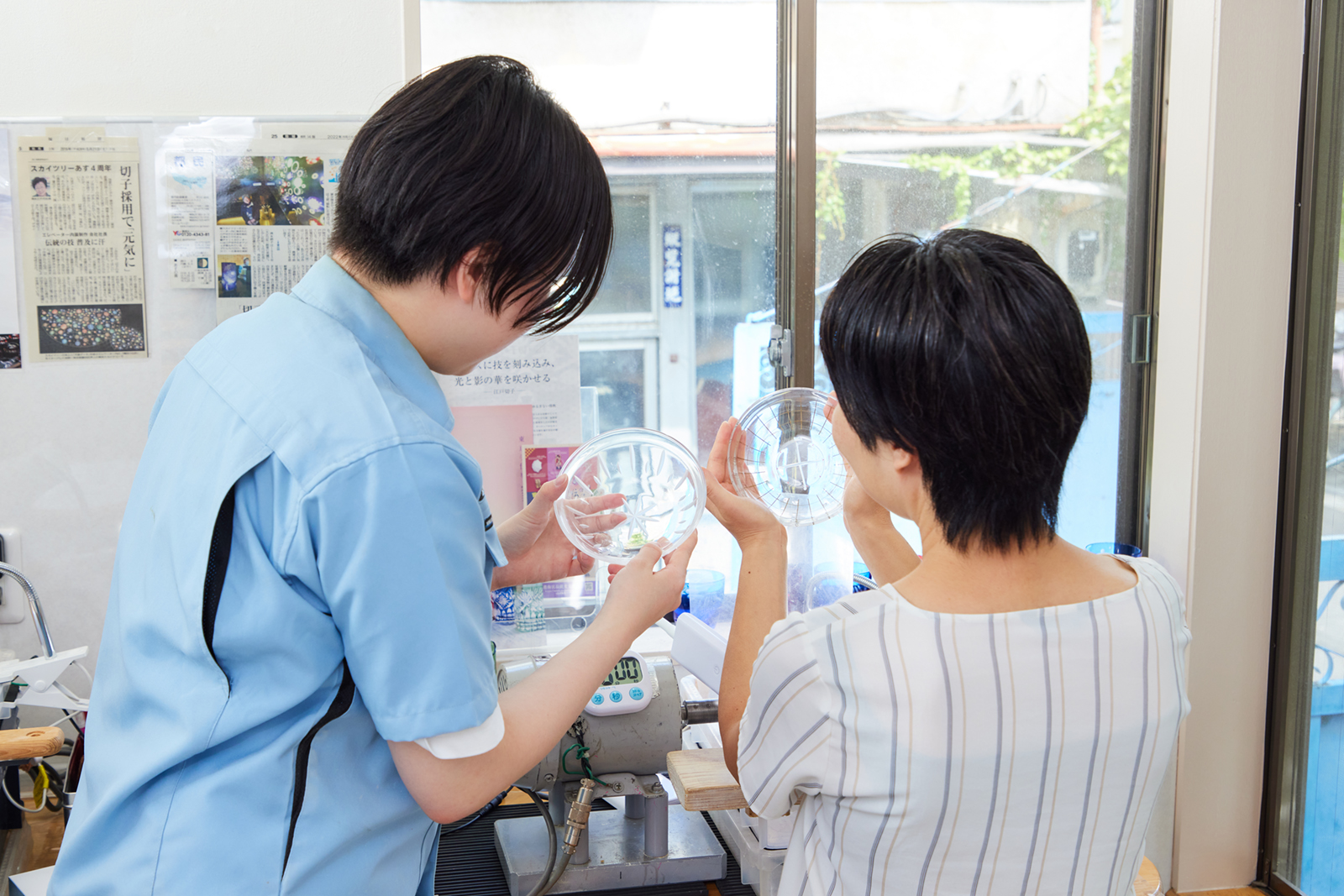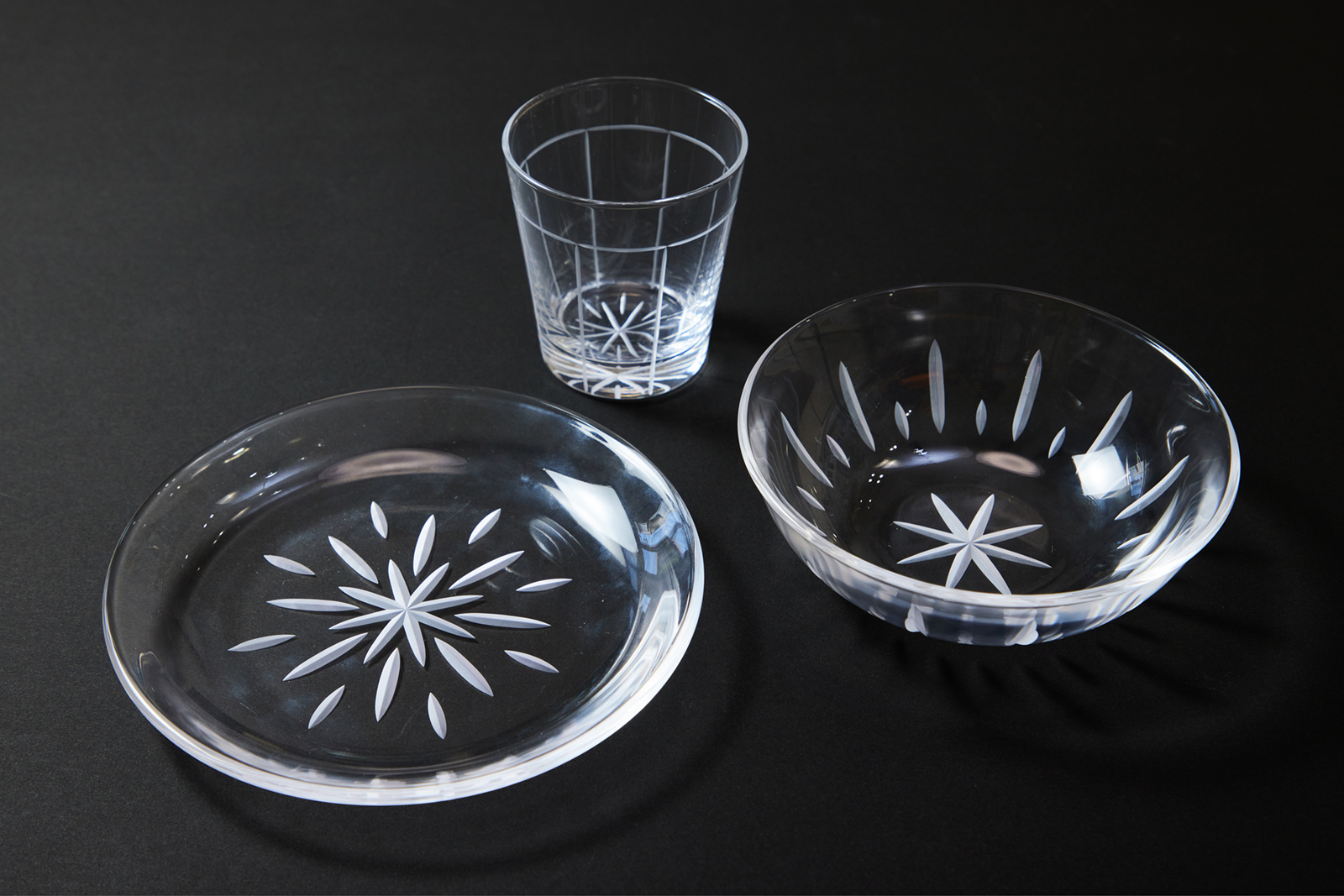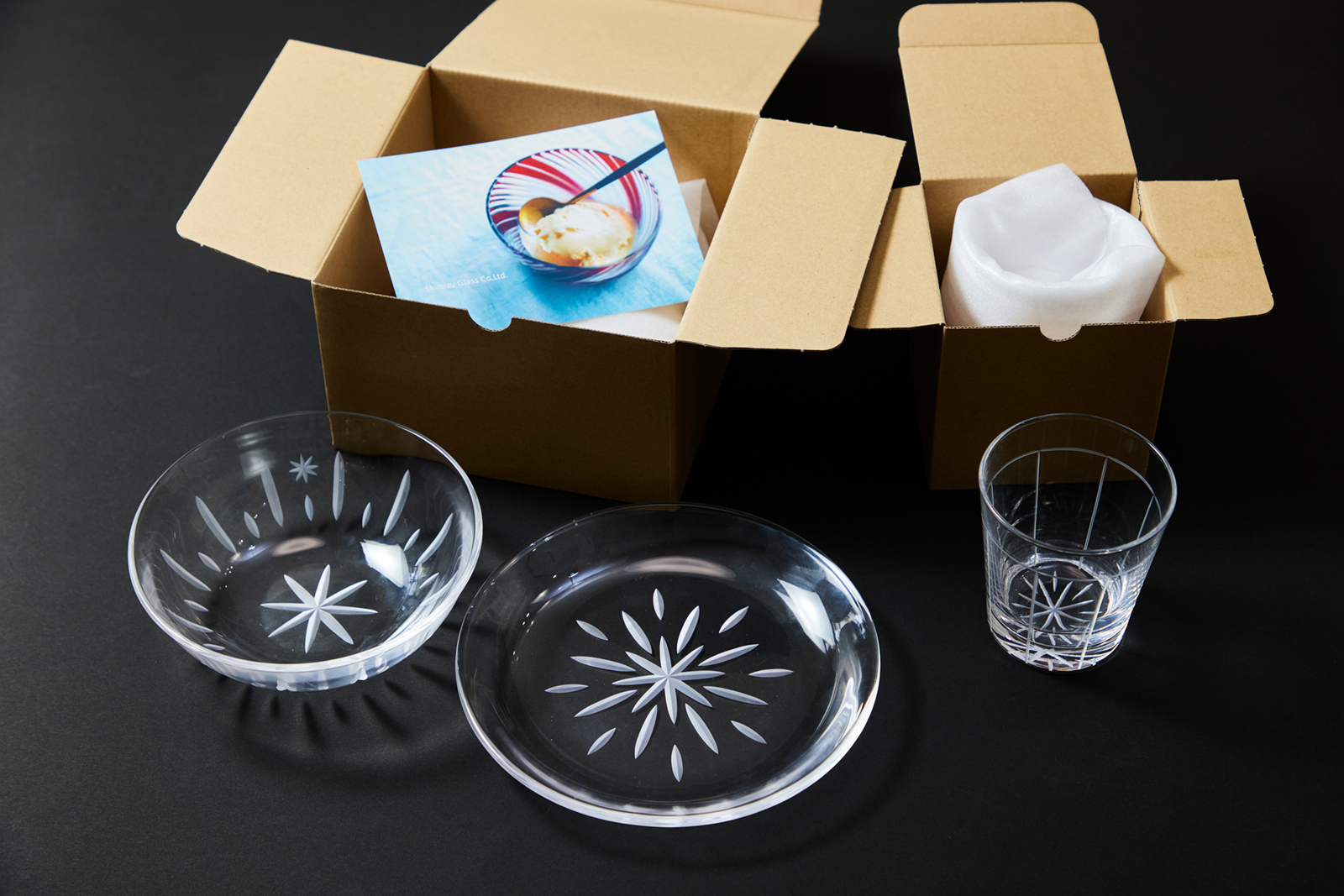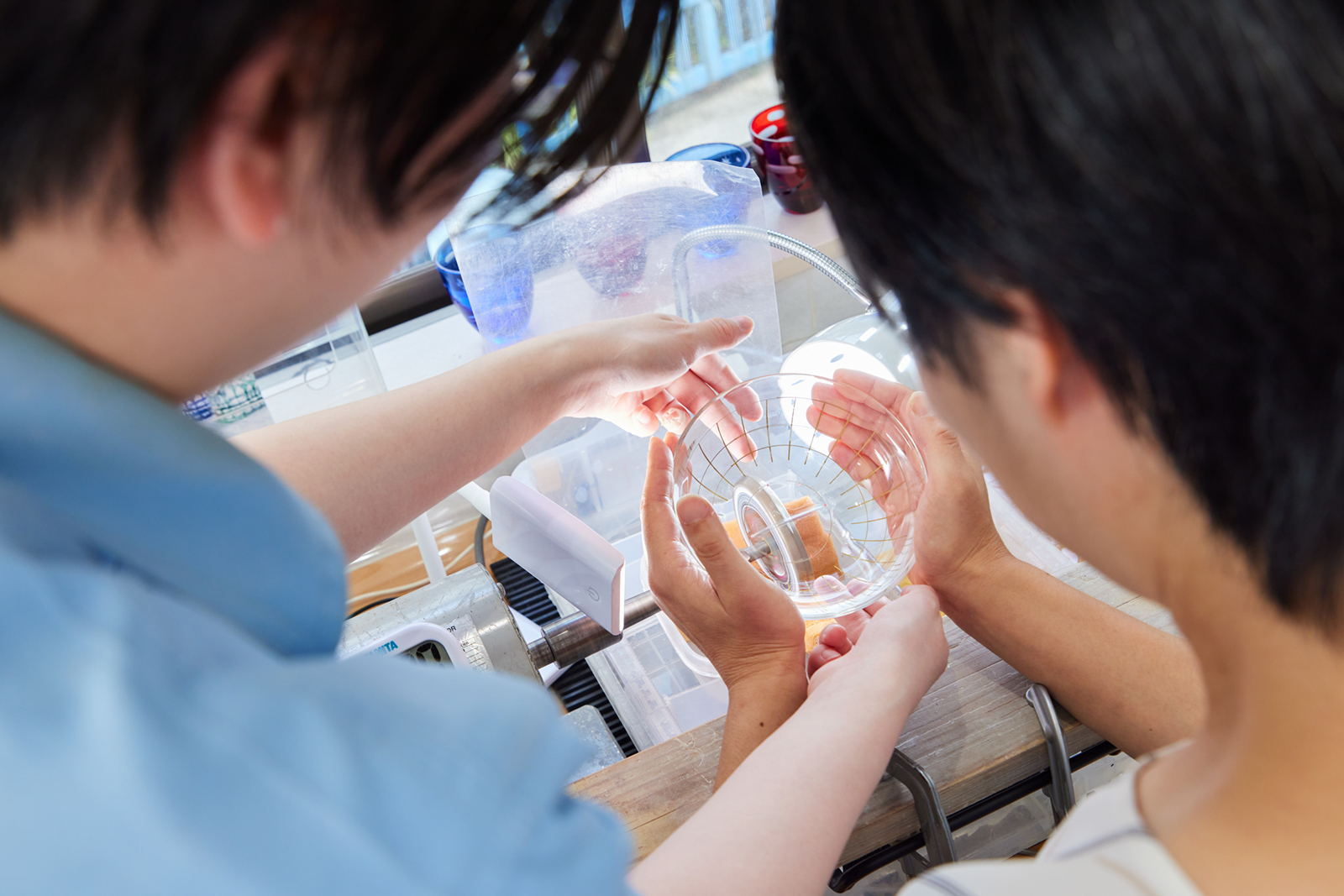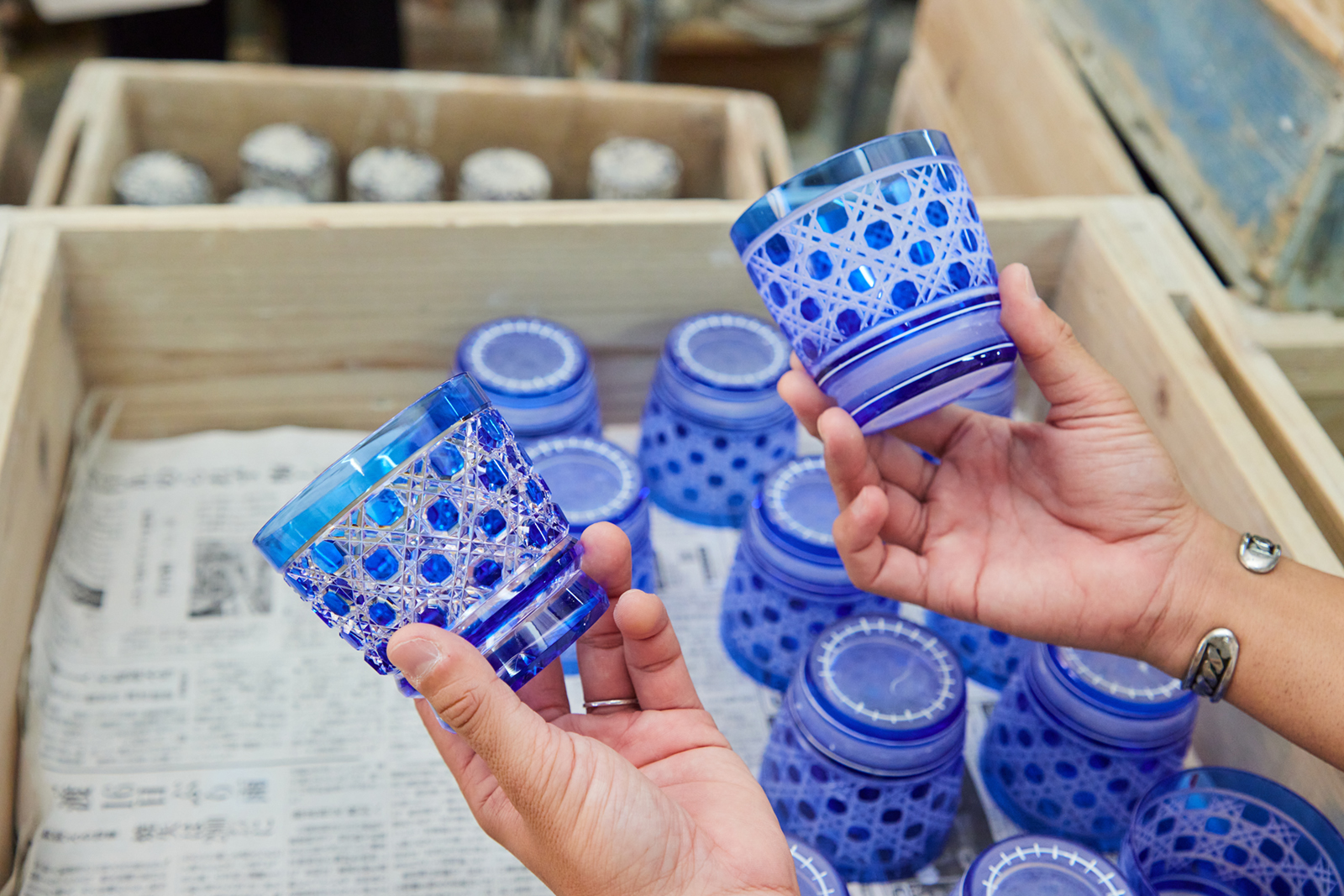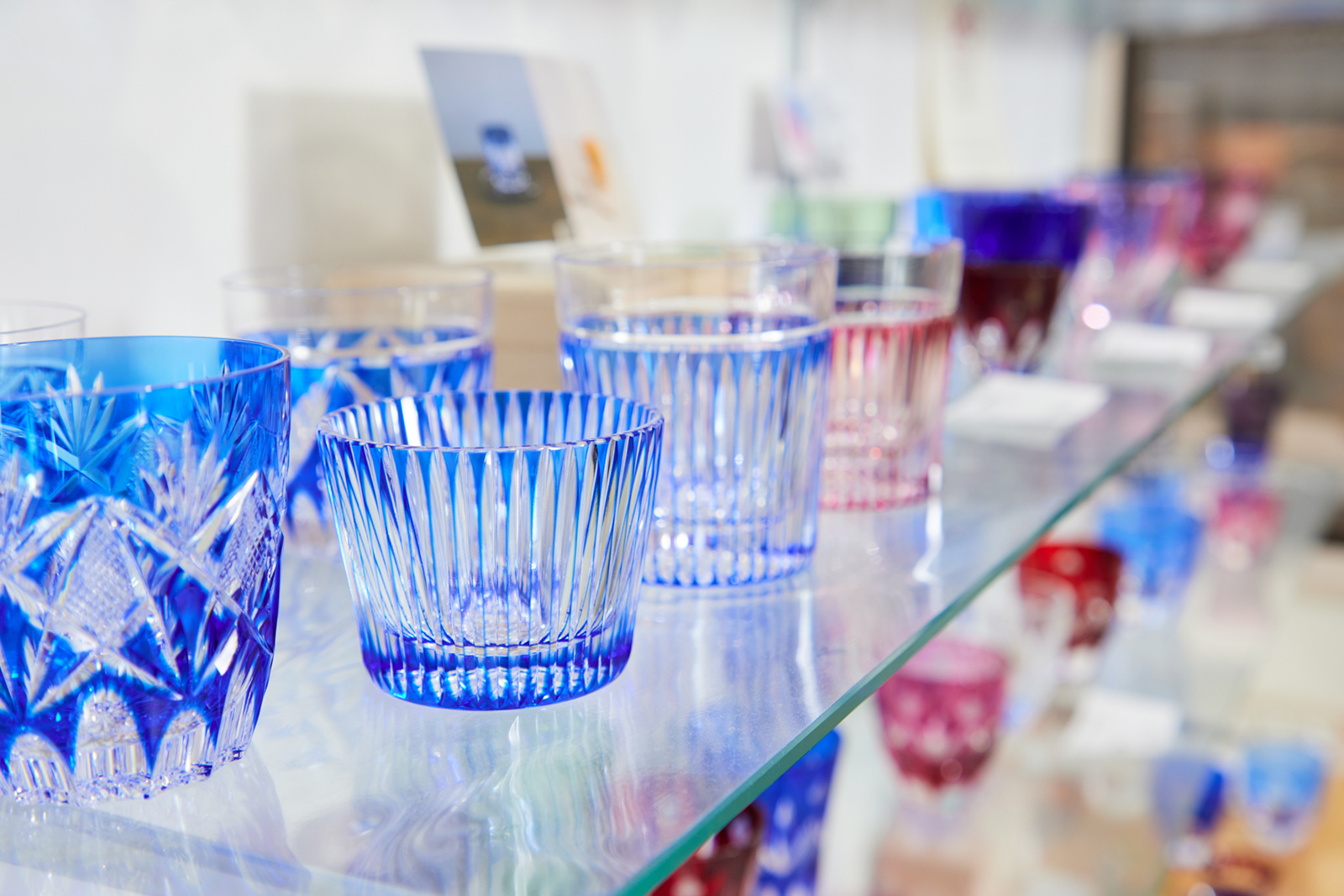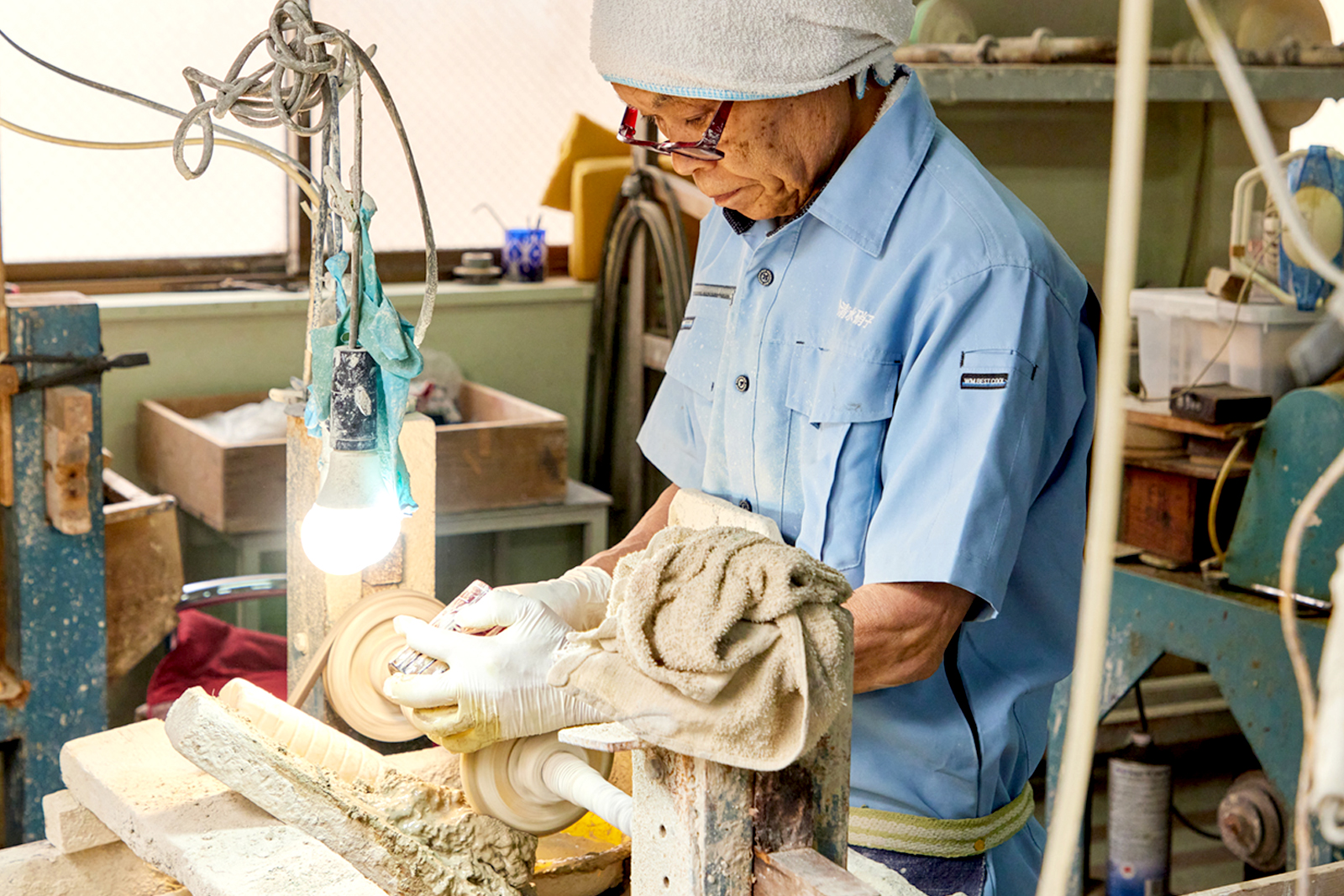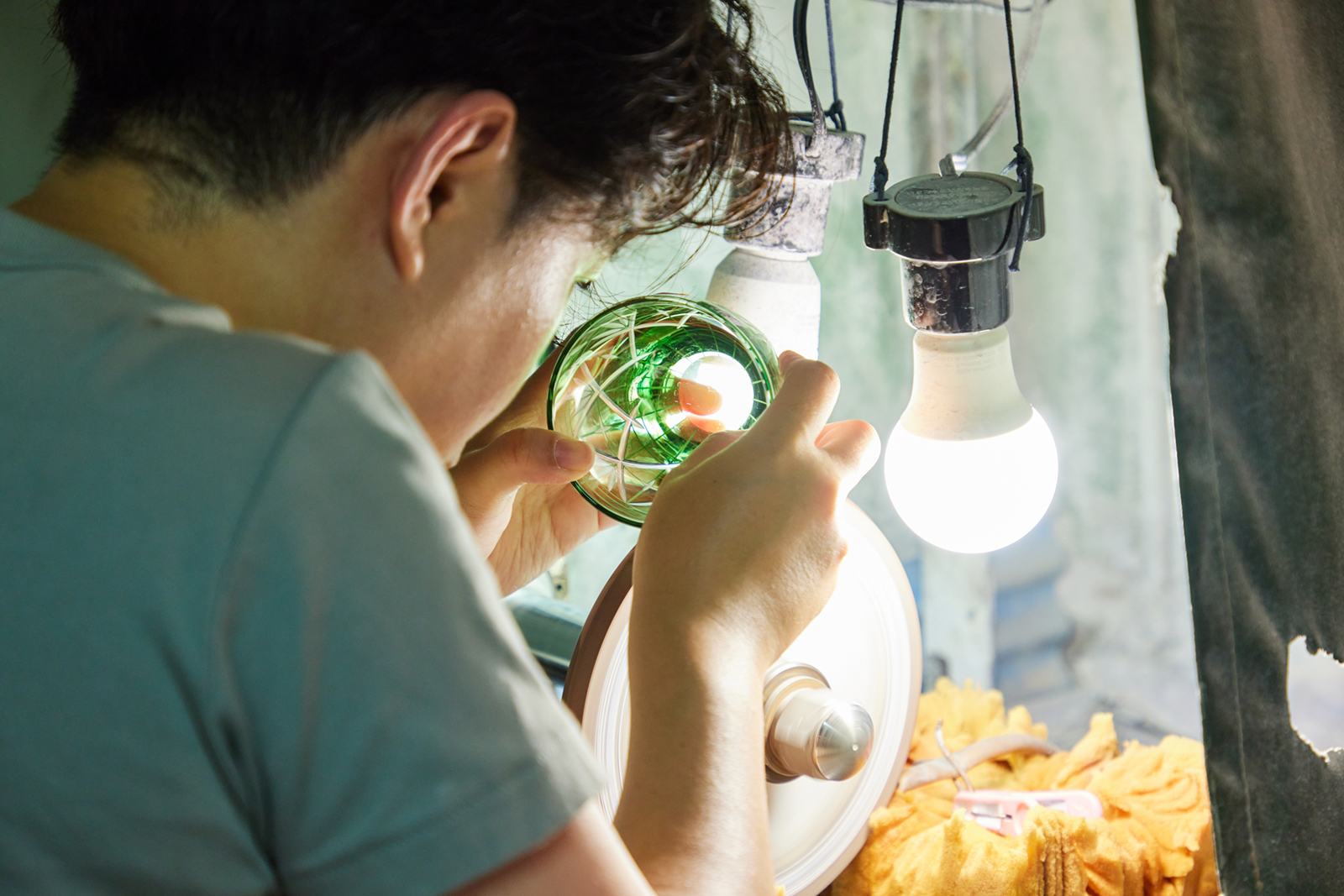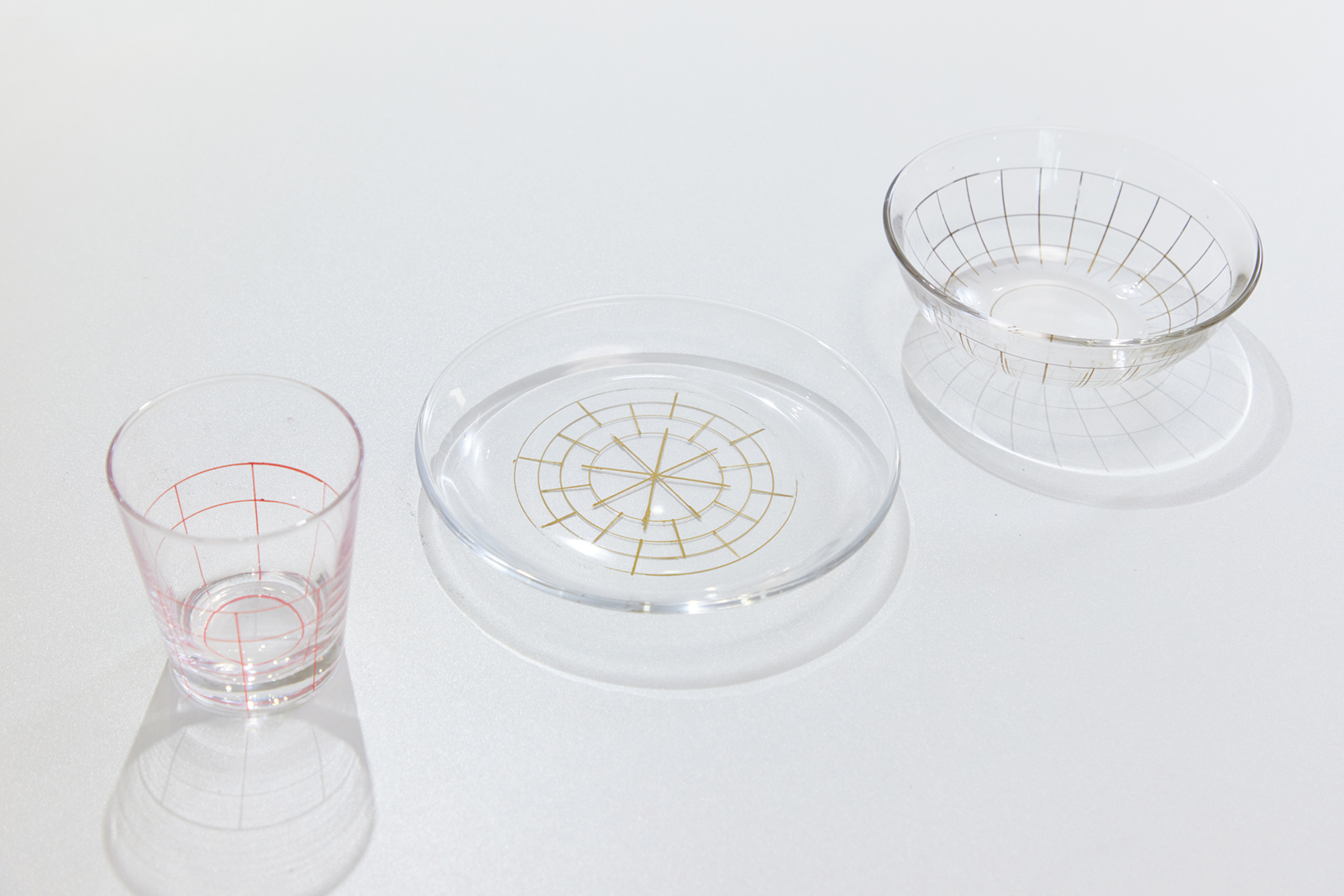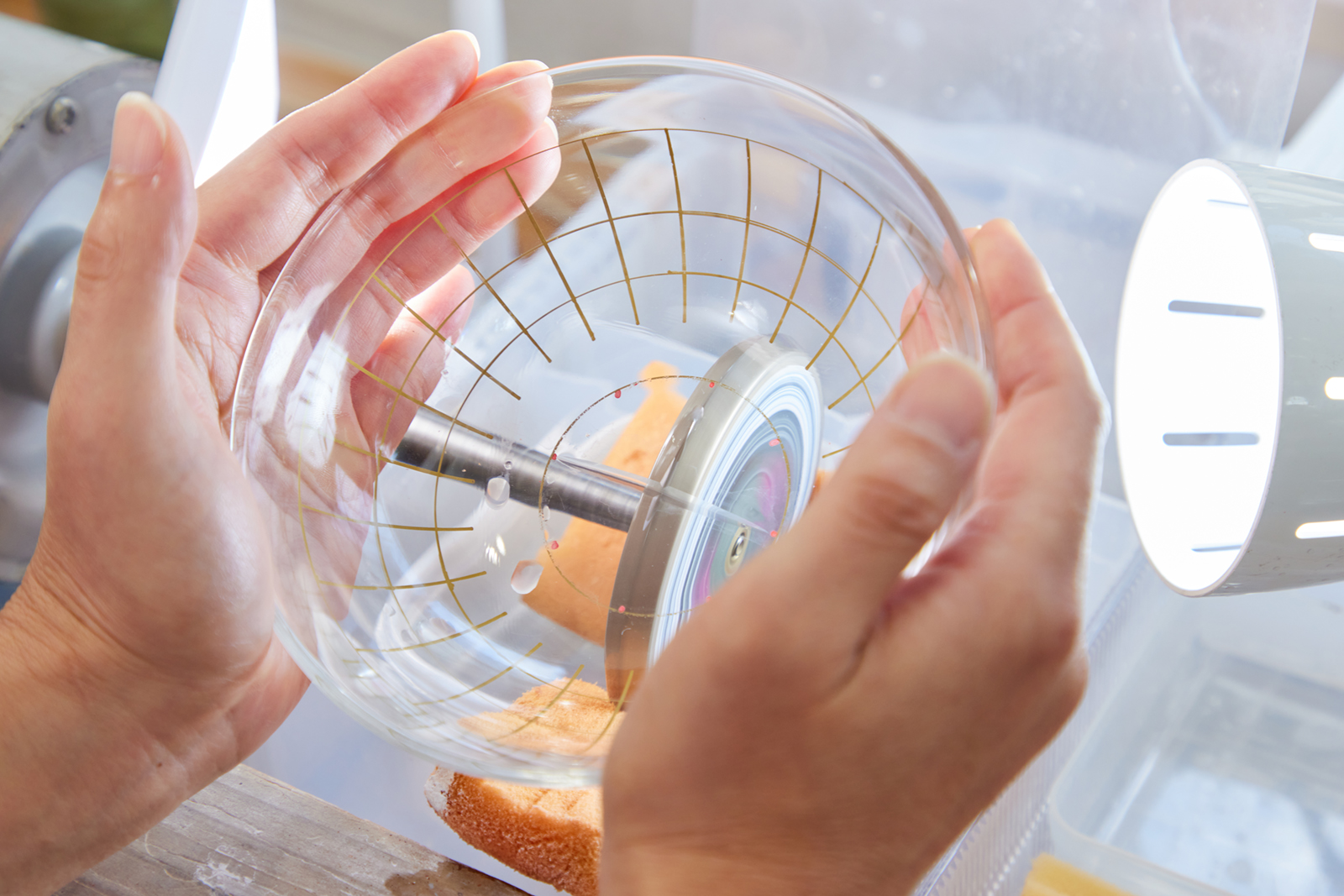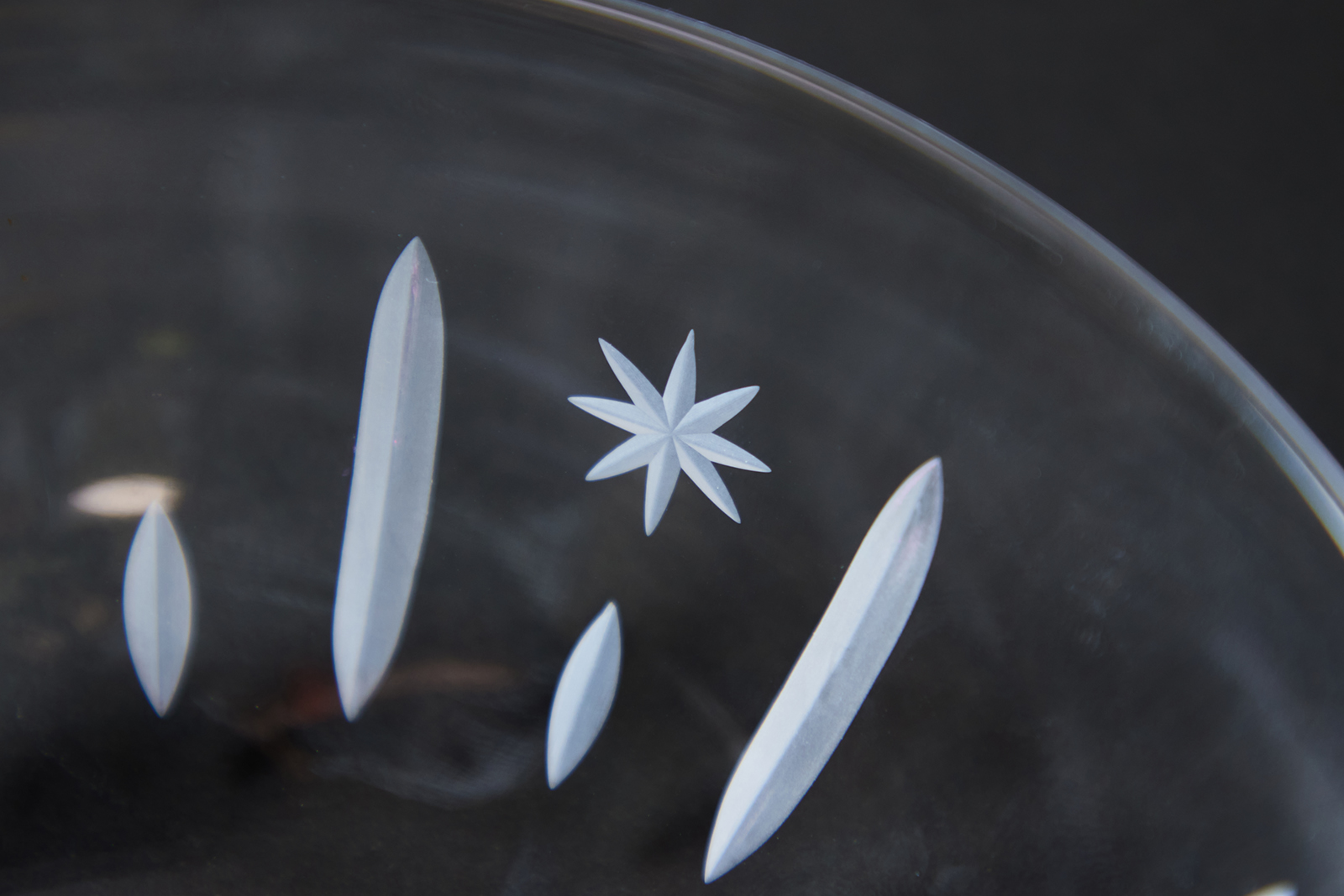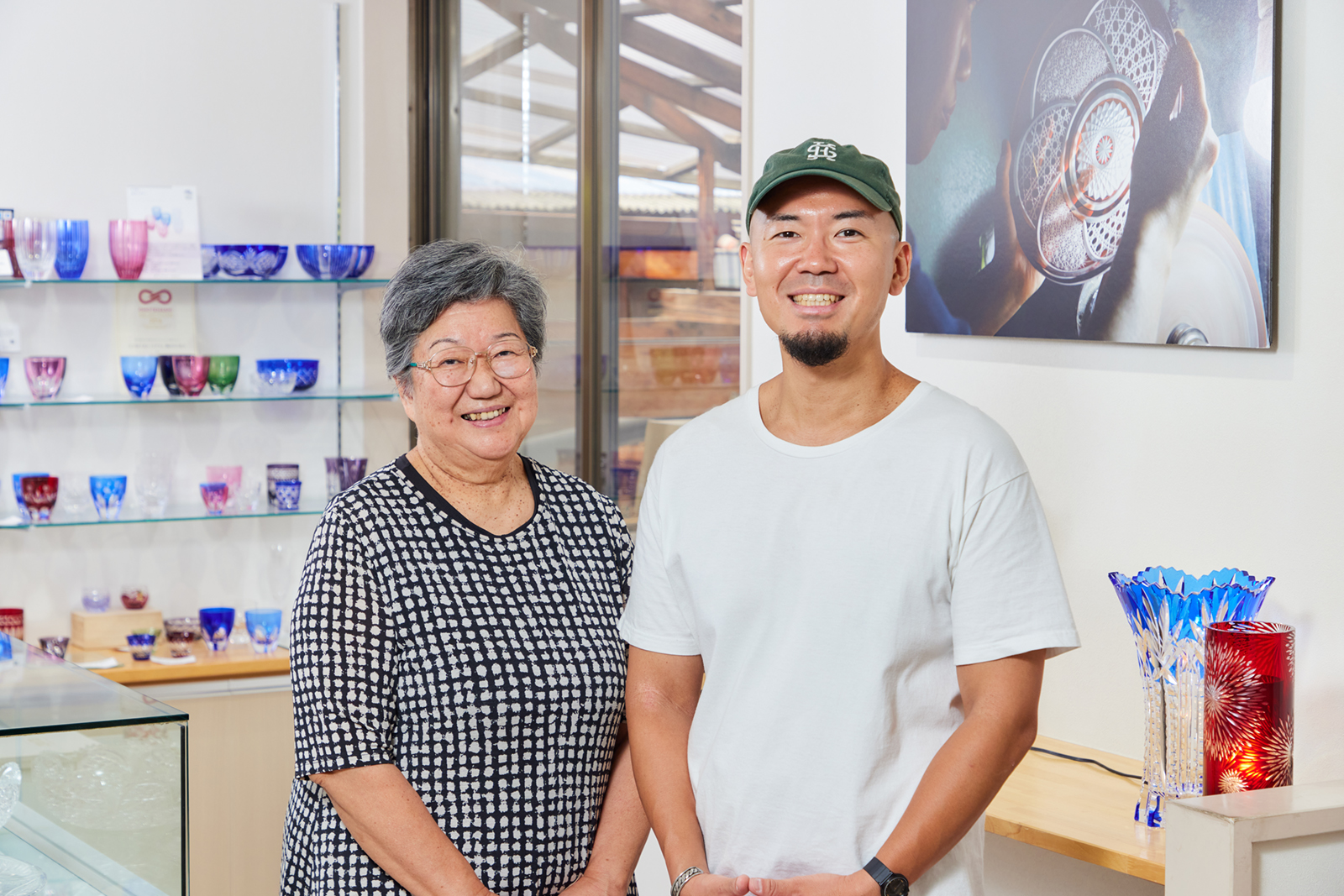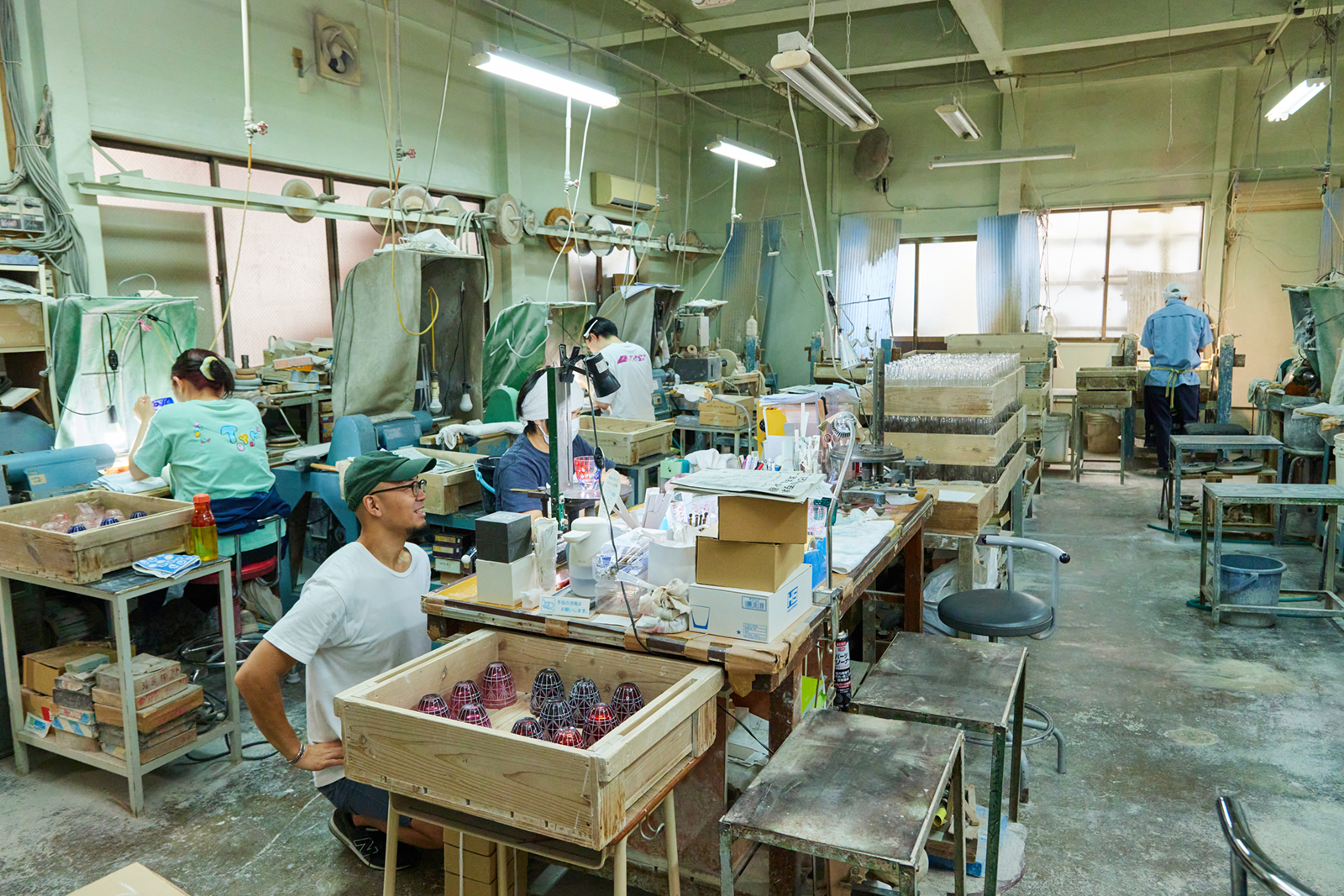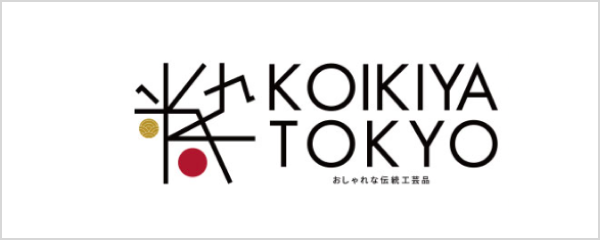Shimizu Glass kiriko crafting techniques, which are even featured in the TOKYO SKYTREEⓇ
Edo Kiriko cut-glass is said to have originated around 1834. It is said that it started with glass engraved by Mr. Kagaya Kyubei at his glass shop in Edo's Odenma-cho district. Subsequently, while incorporating techniques introduced from overseas, it underwent its own unique development, ultimately establishing the Edo Kiriko cut-glass style that has been passed down to the present day.
Shimizu Glass was established in 1923. Founded as a specialized glass processor, Shimizu Glass gained recognition for its advanced techniques and subsequently secured orders for glass tableware production from major tableware manufacturers. Subsequently, in 1994, Shimizu Glass started production of Edo Kiriko cut-glass to sell as its own products. Recently, it has been recognized for its advanced techniques across various fields, including glass decorations on the elevator walls and ticket counters of TOKYO SKYTREE.
The workshop is the stage for serious face off between the artisan and glass.
In this activity, you will experience Kiriko cut-glass crafting through instruction, observation, and hands-on creation. After learning the basics of Edo Kriko cut-glass in a video, you will head to observe the workshop where artisans work with glass. The workshop at the back of the site is a place where seven artisans, ranging from seasoned veterans to next generation artisans , engage in a serious face off with Kiriko cut-glass. You'll be utterly captivated by the piercing gaze of the artisan as they unceasingly focus on one spot, shaping the glass.
After a quick tour to the workshop , it is time to experience Edo Kiriko cut-glass crafting. For the tableware you will engrave with Kiriko cut-glass techniques, select one from the options of a tumbler, a salad bowl, or a flat plate. With an image in your mind of what the clear tableware will look like adorned with patterns, select one to take home after the activity.
The tableware features lines drawn by artisans to indicate where kiriko engraving will be applied. The process of drawing lines, known as Waridashi, is one of the crucial steps that determines the beauty of Kiriko cut-glass. The symmetrically balanced lines reveal the dedication and high level of technique cultivated by our staff over time.
The beautiful pattern that emerges is proof of your deep engagement with Kiriko cut-glass
The tools used to engrave patterns on tableware employ the same diamond wheels as those used by artisans. Under the artisan's guidance, press the lines drawn on the tableware onto the rotating wheel as if overlaying the lines onto the wheel. The Waridashi lines serve as guides for applying the glass to the wheel. Ask yourself where to etch your pattern following the template of intersecting vertical lines and horizontal lines. Engrave a Kiriko design while staying aware of shape and balance.
The key to carving a clean pattern is to not apply too much force. The speed and force of the wheel's rotation remain constant, so the shape of the pattern is determined solely by your own pressure. It might feel difficult at first, but the nervousness only lasts until you carve your first line. Start gently, then gradually increase the intensity. When you become so absorbed that surrounding sounds fade away, and you've mastered the balance between pressure and engraving depth, the white pattern emerging on the tableware will start to gleam beautifully.
We can also add a small pattern by an artisan at the end if you want. The way the pattern emerges swiftly and precisely is nothing short of art. As a collaboration between the passion poured into meticulously crafted Kiriko cut-glass and the artisans’ technique, this tableware will grace your everyday life with quiet elegance and brilliance.
Enjoy spending time with Edo Kiriko cut-glass
“Using Edo Kiriko cut-glass everyday is what is the most important to us. We want everyone to enjoy their time spent with the glass,” comments Ms. Michiyo Shimzu, the third-generation shop head. . Edo Kiriko cut-glass was born and nurtured within the daily lives of Edo townspeople. So, our hope is that you will hold it from time to time in your daily life and recall the memories of slipping out of time while immersing yourself in the world of Edo Kiriko cut-glass.
Founded in 1923 in Kikukawa-cho, Honjo (present-day Kikugawa, Sumida-ku). In 1947, Shimizu Glass started accepting commissions from major tableware manufacturers. After a relocation to Horikiri, Katsushika-ku, the following year, the company began manufacturing and selling its own Edo Kiriko cut-glass products in 1994. The highly regarded processing techniques honed through cut glass manufacturing have led to projects beyond the confines of Edo Kiriko cut-glass, such as creating the wall decorations for the elevators at TOKYO SKYTREE.
